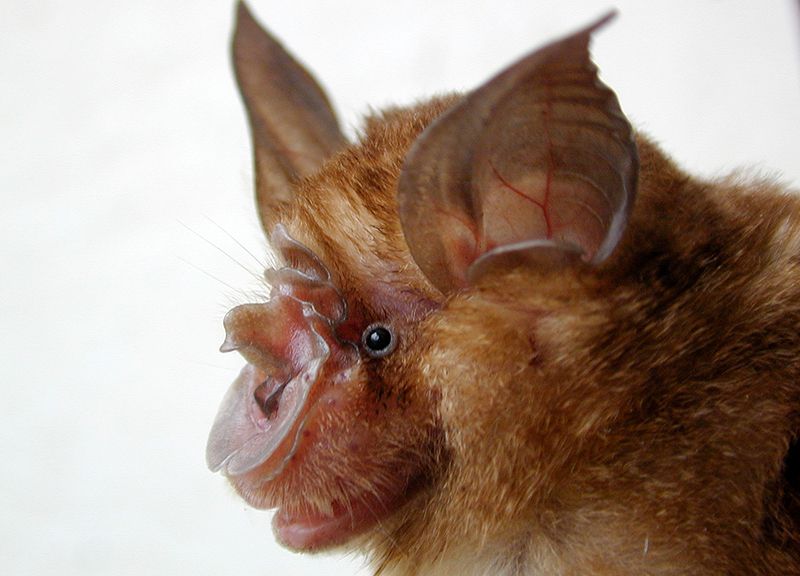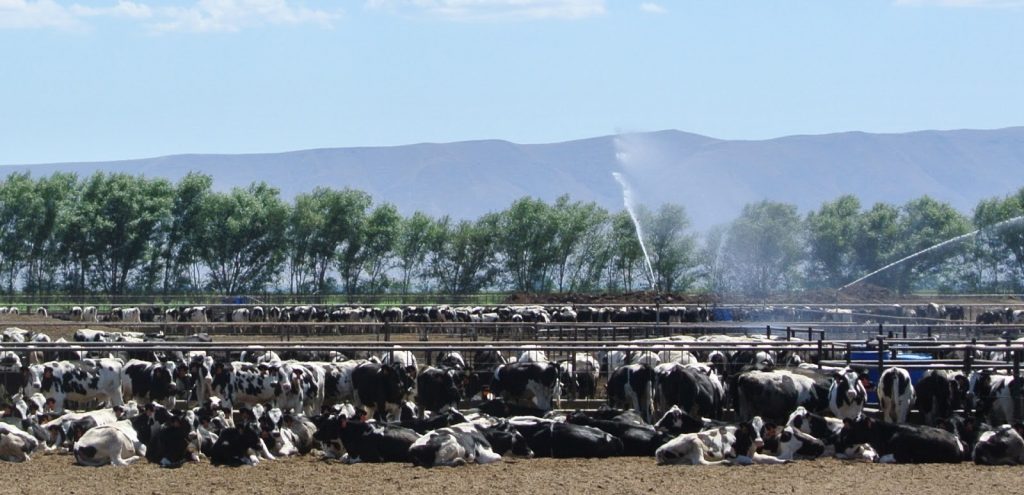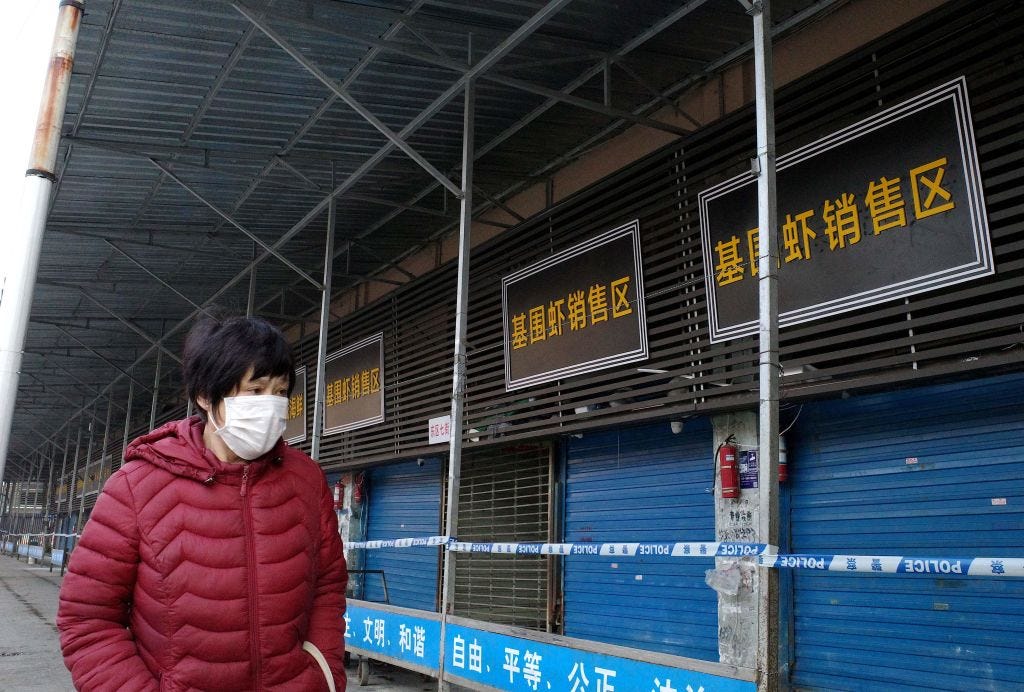It started as a local crisis, but COVID-19 has quickly become a global specter haunting 2020. International travel, sports leagues, school classes and shows have all been cancelled. Over a million have been infected, more than 80,000 have died and the virus continues to spread. For those who remember, though, this is not the first time in recent memory that a coronavirus has turned into a worldwide problem. The SARS outbreak of 2002-3, though less severe than COVID-19, also infected over 8,000 individuals in over 20 countries. Both these epidemics are thought to have begun in the same type of place: a Chinese wildlife market. These wildlife markets do certainly pose a health risk, and authorities should permanently close them. However, if the world is truly dedicated to stopping future disease outbreaks, it must move beyond simple solutions and address the complex ecological issues that threaten society on a larger scale.
Game for Anything
In comparison to Western countries, wildlife is easier to find and buy in certain parts of China, as well as in some Southeast Asian countries, like Singapore and Vietnam. Vendors at some public markets hawk an impressive variety of live wild animals, ranging from badgers to peacocks to wolf cubs, available for purchase and often consumption. These venues are sometimes termed “wet markets,” though, in reality, most wet markets sell ordinary fruits, vegetables and meats rather than exotic creatures. Wildlife markets are generally legal.
Both economics and culture are responsible for the survival of the wild meat market in China. Today, buying and consuming rare animals is often a form of conspicuous consumption, a way for the rich to flaunt their wealth and status. Historically, however, wildlife served as a source of protein for poorer residents in rural areas, especially after the Great Chinese Famine from 1959 to 1961, and raising and selling wild animals has offered a stable source of income in rural regions since the government legalized privatized agriculture in 1978. In fact, according to one study, prior to COVID-19, the wildlife trade in China was valued at around $74 billion and provided jobs for over one million people. Combined, these factors have helped to cement the place of wildlife markets within China.
Another reason for their existence is the belief, promoted by the wildlife farming industry, that consuming wild animals can cure diseases. “In the Chinese culture, there’s the belief that eating a live animal, or an animal that was just recently killed, is healthful to you, particularly if you’re sick,” said John Swartzberg, MD, a clinical professor emeritus at the UC Berkeley School of Public Health, in a telephone interview.
Unfortunately, in addition to issues of species endangerment and inhumane animal treatment that have led some to cry foul, these live animal markets are often the perfect places for the transfer and spread of pathogens. According to the CDC, roughly 75 percent of new pathogens are zoonotic, meaning they originate in animals. Wild animals represent a particular danger to humans because they often carry diseases that humans have had no previous exposure to, meaning that humans have no immunity to them.

In wildlife markets, vendors stack various species of animals next to or on top of one another, greatly facilitating the transfer of existing pathogens from one species to another. As Christian Walzer, Executive Director of Health at the Wildlife Conservation Society, told the New York Times when describing the conditions, “you have a bird pooping on a turtle that poops on a civet. For getting new viruses to emerge, you couldn’t do it much better even if you tried.”
Once viruses spread to new animals in the wildlife market, it is only a matter of time before they find a way to humans as well, whether through the actual consumption of the animals or simply through physical contact. This is especially true given the lack of hygiene in the markets, where butchers often kill animals without sanitizing their tools or washing their hands.
“Live meat markets are perfect setups for humans coming in close proximity with live animals that we’ve never encountered before,” said Professor Swartzberg. “That’s why we saw SARS, that’s why we’re seeing [COVID-19].”
From Bat to Man: Tracing the Origins of Disease
In the cases of both SARS and COVID-19, experts almost universally agree that the virus began in bats, which are known to harbor a plethora of pathogens. “The RNA of the coronavirus in bats is very, very similar, in the 90+ percentile, to the coronavirus in humans. That’s pretty compelling evidence,” stated Professor Swartzberg.
“Bats are really unique in having a lot of viruses in their immune system,” pointed out Peter Dailey, a professor who teaches a class on zoonotic diseases at the UC Berkeley School of Public Health, in a telephone interview. A recent study by UC Berkeley researchers shows that bats’ immune systems can withstand viruses without fully eliminating them, essentially making bats reservoirs of quickly reproducing, easily transmissible viruses like SARS.

Thus, while eating bat soup might not be responsible for the most recent outbreak, the infection likely spread from bats to another animal in the market — some suspect a pangolin, others some sort of snake — before finally reaching humans. Because the Chinese government has shut down the Wuhan market where COVID-19 is thought to have originated, however, it is difficult to pinpoint the exact origin and transmission path of the disease. “There’s lots of reasons, now that they’ve outlawed wet markets, why people don’t want to be blamed for this,” mentioned Professor Dailey. “[It’s] going to be difficult reconstructing what exactly happened here.”
The Ban Date of Heaven
Although circumstantial evidence is currently all we have to implicate the Wuhan market as the starting point of COVID-19 given the difficulties in tracing the route of the virus, the evidence we do have is fairly strong and suggests a causal relationship between the market and the current outbreak. 27 of the 41 original patients had visited the wet market in question, and we know that SARS originated in a similar venue back in 2002. And even if a different culprit were discovered, the fact remains that wildlife markets are a “perfect incubator for transmission,” as Professor Dailey put it.
The ideal solution is a wholesale ban on wildlife markets and the entire wildlife trade, a policy supported by both Professors Dailey and Swartzberg. Indeed, on February 24 the Chinese legislature passed a law doing just that. The new law prohibits the buying, selling, and consumption of wild animals, and it lays the foundation for a permanent revision of the Wildlife Protection Law later this year. The Wildlife Protection Law is the country’s primary policy regarding the wildlife trade and currently suffers from ambiguities, exceptions and lax enforcement. Through targeting the demand for as well as the supply of wildlife, this law is likely to have a much stronger impact than previous attempts to regulate the wild animal trade.
One of the most salient arguments raised against banning wildlife markets is that doing so eliminates a staple of Chinese culture that has existed for millennia. After all, commanding people to give up a long-held tradition seems insensitive, if not downright paternalistic. To illustrate the point, “what if you were going to prohibit deer hunting in the Midwest? How would that go over? Or wild boar hunting in California?” asked Professor Dailey.
While it is important to stress respect for cultural practices, especially in light of racist and false accusations leveled against China in the wake of COVID-19, there is a decent amount of support for the ban within China. Many Chinese citizens have railed against the wildlife trade, rightly seeing it as detrimental to public health. As news of the likely origins of COVID-19 spread, campaigners took to Weibo, the Chinese social media platform, with the hashtag #rejectgamemeat, which garnered 45 million views. It seems unfair to jeopardize the world’s health simply to preserve a practice that is unpopular with both experts and Chinese residents.
“What if you were going to prohibit deer hunting in the Midwest? How would that go over? Or wild boar hunting in California?”
Peter Dailey
The key, for now, will be for the Chinese government to maintain this ban in the face of pressure from interest groups, ensure its enforcement and work to close loopholes once it reconvenes to amend the Wildlife Protection Law. After all, China also shut down wildlife markets following the SARS outbreak, only to allow them to spring up again once the epidemic ended. Given the economic importance of wildlife markets, a significant amount of pushback has come from the wildlife trade lobby in China, which has a disproportionate amount of influence within the government.
To mitigate the shock to breeders’ and sellers’ livelihoods, it is the responsibility of local governments to offer compensation to those affected and assist local residents in diversifying their sources of income. Furthermore, state agencies should disseminate information explaining the health and environmental effects of the wildlife trade through a public education campaign to demonstrate the reasons for the ban and raise public support, especially among consumers who previously drove demand. Implementing these two policies alongside the ban is crucial to prevent the wildlife trade from shifting underground, making it more difficult to surveil and regulate.
For Less Wild Lives, Protect Wildlife
The new law in China is a step in the right direction, but it is only the start of what must become a more holistic view of humanity’s relationship with the environment. For one, the illegal wildlife trade is still highly prevalent around the world, especially in regions like Southeast Asia.
Wildlife markets are not the only places where new zoonotic diseases threaten to break out, though. As humans continue to expand their areas of residence and encroach on animal habitats, the risk of not only biodiversity loss but also future pandemics goes up. Deforestation, increasing urbanization and disease transmission are all related. New measures will have to be taken to either reduce human-wildlife interaction or mitigate its effects.

Additionally, while it is easy to point the finger at foreign practices of consuming wildlife as responsible for disease transmission, it is worth remembering that industrial farming practices and concentrated animal feeding operations in the developed world also pose a risk of a pandemic. This will only become more true as new developing economies elevate ever-larger segments of their population to middle-class status, raising global demand for meat.
To prevent outbreaks like COVID-19 from becoming the new normal, it is critical not only to prepare for future epidemics but also to address their root causes. And unfortunately, unlike wildlife markets, these issues cannot all be solved with a simple ban.
Featured Image Source: Getty Images






Comments are closed.